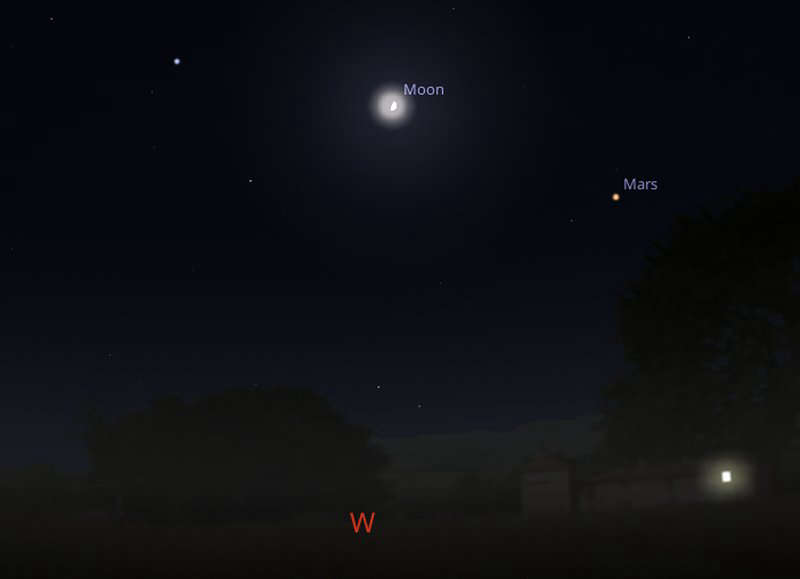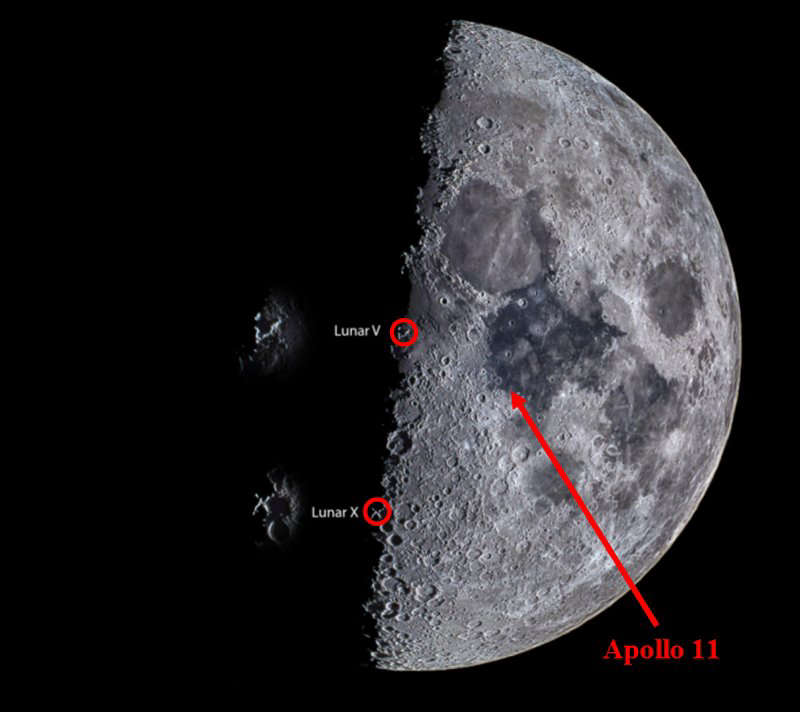
Monday 5th to Sunday 11th May 2025
In the early morning of Monday 5th, we will be just past a first quarter Moon and this is the optimum time to look for that clair-obscur visual effect known as the Lunar X and V. At

While you are trying to spot the "X" and "V" shapes, it will also be very easy to find the

A good question I am sometimes asked is whether there is a telescope on the Earth powerful enough to see the descent state of the Lunar Landing Module or the American flag that Apollo 11 left behind. The short answer is "no" unfortunately. The smallest features we can see with a telescope are still several kilometers across at least and compared to that, the Apollo hardware is miniscule!
If you've brought your telescope out to see the "X" and "V", you could also aim it towards Mars and try to observe its polar ice cap. You may notice that Mars is extremely close to the Beehive open cluster of stars, known as M44 in the Charles Messier catalogue.

The cluster contains about 1000 stars and is between 500 - 600 light years away from us. It's existence has been known about since ancient times and the cluster was first observed by the Greek mathematician Ptolemy around 150AD. Galileo made observations of it in 1609 with his basic telescope and Charles Messier added the cluster to his list in 1769. Because the light takes so long to reach us, if you do observe the cluster next week, you will be seeing it how it was before Galileo was even born! The cluster is about 600 million years old, so to be fair, its structure won't have changed much over the last few hundred years!
www.starsoversomerset.com
Screenshots courtesy of Stellarium
Copyright Adrian Dening and Radio Ninesprings 2025

 Winter Coat Scheme
Winter Coat Scheme
 Recycling
Recycling
 Ilminster Local Plan
Ilminster Local Plan
 Hate Crime
Hate Crime
 False Fire Alarms
False Fire Alarms
 Dog DNA
Dog DNA








